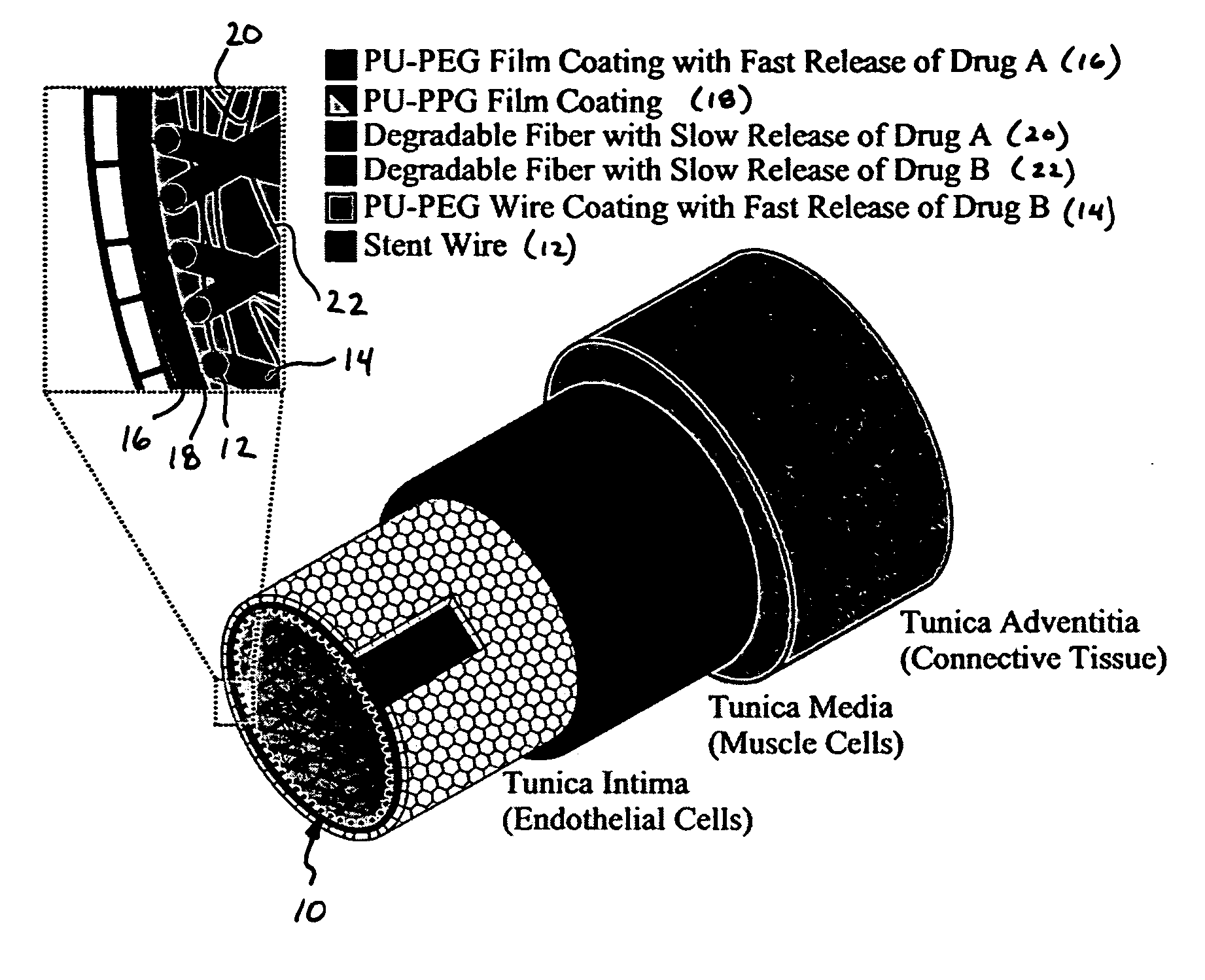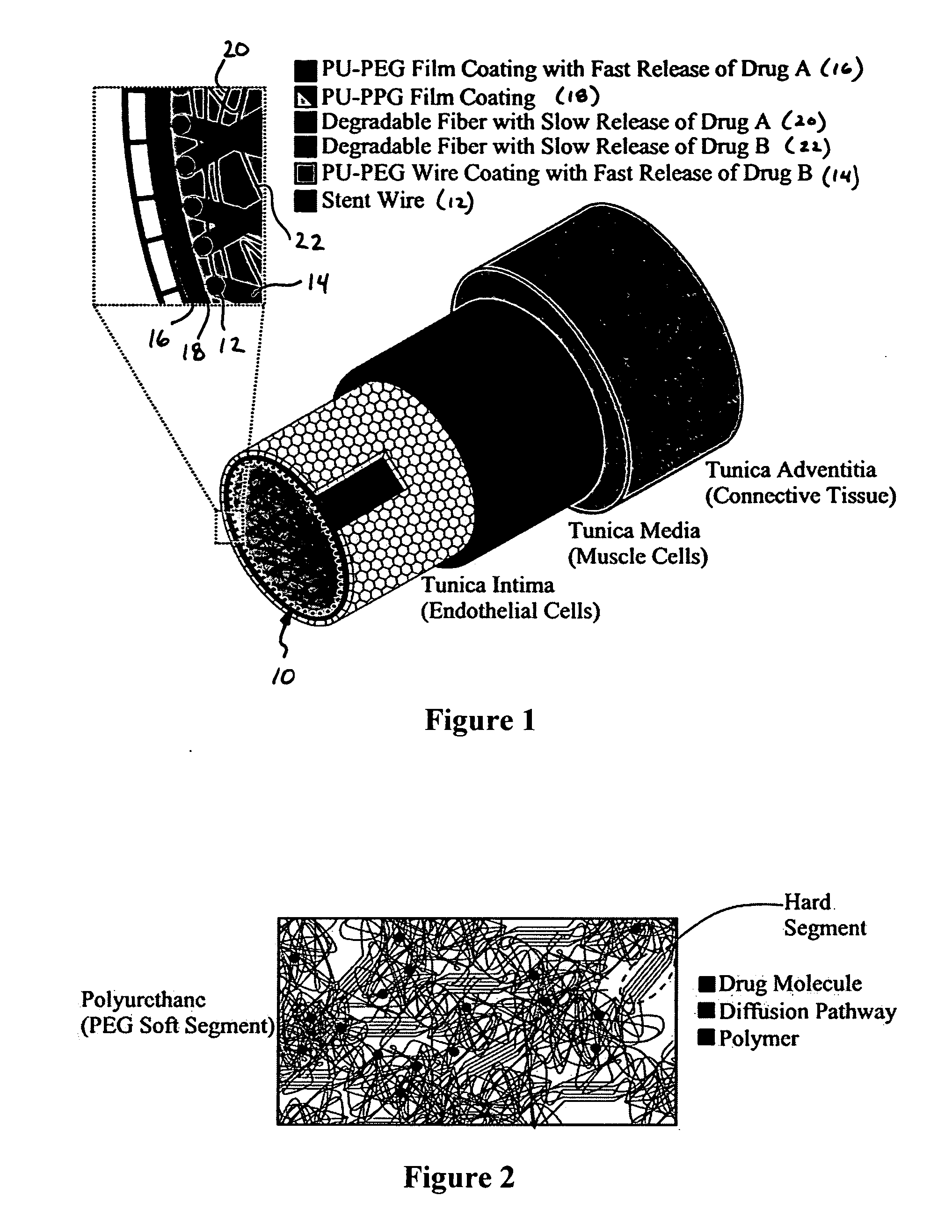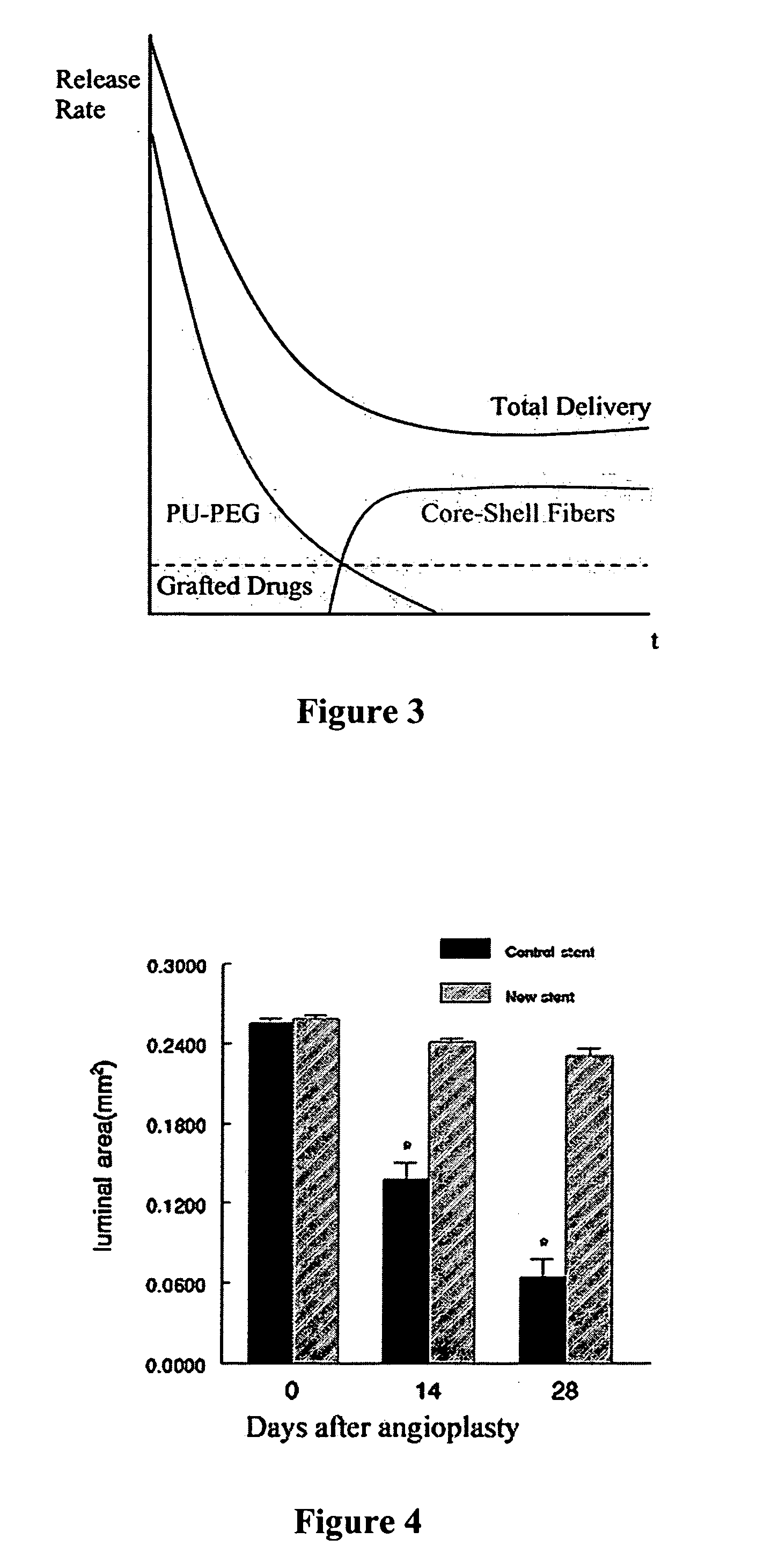Barrier stent and use thereof
a stent and barrier technology, applied in the field of new stent construction, can solve the problems of stent restenosis, increase neointima formation, and reduce the stenosis rate by about 10%, and achieve the effect of high aspect ratio and preferential penetration
- Summary
- Abstract
- Description
- Claims
- Application Information
AI Technical Summary
Benefits of technology
Problems solved by technology
Method used
Image
Examples
example 1
Comparison of Conventional Stent to Stent Having Outer Polyethylene Layer Impermeable to Cells
[0075] Prototype barrier stents were prepared by Scientific Commodity, Inc., at the request of the inventors using an outer polyethylene layer that is impermeable to all cells. These prototype stents were compared in vivo to conventional mesh stents.
[0076] Rat carotid artery balloon angioplasty was performed as described in our previous study (Hamuro et al., J. Vasc. Interv. Radiol. 12(5):607-611 (2001), which is hereby incorporated by reference in its entirety). Immediately after angioplasty, the stents were implanted into the injured carotid arteries. The animals were sacrificed immediately after (0 day) and at 14 and 28 days after stent implantation, and the stented segments were isolated for histological analysis. As shown in FIG. 4, the luminal areas in carotid arteries with the prototype (new) stents are greater that those with conventional stents. These results suggest that use of ...
example 2
Synthesis and Evaluation of Outer Coating Materials
[0080] The selection of polyurethanes for outer stent coatings is based on biocompatibility (Brown, J. Intraveneous Nursing 18:120-122 (1995); Szycher et al., Medical Devices Technol. 3:42-51 (1992); Jeschke et al., J. Vascular Srg. 29:168-176 (1999), each of which is hereby incorporated by reference in its entirety).
[0081] Polyurethanes are polymers consisting of hard and soft segments within the molecular chain. The morphology of polyurethane is characterized by the aggregation of hard segments, rigid domains, dispersed in a matrix of the soft segments. The phase separation is due to the chemical differences between the hard and soft segments. The polyurethane chemistry permits tailoring of properties to meet numerous applications through the appropriate selection of the reactive intermediates: diisocyanates, soft segment, and chain coupler. Polyurethane elastomers exhibit elastic behavior under low stress conditions. The more e...
example 3
Prospective
Synthesis and Evaluation of Mixed Fiber / Film Coating Materials
[0095] A composite fibrous polyurethane material using appropriate layers of continuous filament microfibers, nonwoven webs of microfibers, and nonwoven webs of nanofibers will be synthesized. Continuous filaments will be produced using micro-extrusion melt spinning (MS) techniques, nonwoven webs made of microfibers will be produced using melt blowing (MB), and nonwoven webs made of nanofibers will be produced using electrospinning (ES). The polyurethanes that will be used in ES do not need to be melt processable since the polymer is dissolved in solvent.
[0096] Continuous filaments of PU will be produced first using a micro-extruder with an air quench, drawing and continuous take-up system (e.g., Randcastle Microtruder Model No. RCPR with a ⅝-inch diameter screw, single spinneret die, two godets for drawing the extruded filaments). Extruded filaments will be unwound and tested for biocompatibility, degradatio...
PUM
| Property | Measurement | Unit |
|---|---|---|
| Width | aaaaa | aaaaa |
| Width | aaaaa | aaaaa |
| Width | aaaaa | aaaaa |
Abstract
Description
Claims
Application Information
 Login to View More
Login to View More - R&D
- Intellectual Property
- Life Sciences
- Materials
- Tech Scout
- Unparalleled Data Quality
- Higher Quality Content
- 60% Fewer Hallucinations
Browse by: Latest US Patents, China's latest patents, Technical Efficacy Thesaurus, Application Domain, Technology Topic, Popular Technical Reports.
© 2025 PatSnap. All rights reserved.Legal|Privacy policy|Modern Slavery Act Transparency Statement|Sitemap|About US| Contact US: help@patsnap.com



